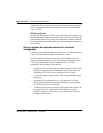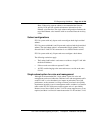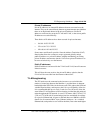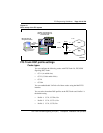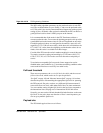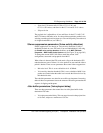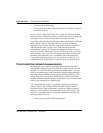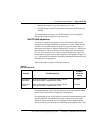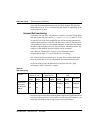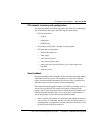
Page 138 of
378
ITG Engineering Guidelines
553-3001-202 Standard 1.00 April 2000
• Voice playout maximum delay.
• Fax playout nominal delay. This can range from 0 to 300 ms, with 100
ms as the default size.
As discussed in “Adjust jitter buffer size” on page 124, lowering the jitter
buffer size decreases the one-way delay of voice packets; however setting the
jitter buffer size too small will cause unnecessary packet discard.
If you need to discard to downsize the jitter buffer, you should first check the
delay variation statistics. First obtain the one-way delay distributions
originating from all source ITG sites using the measurements outlined in
“Measure intranet QoS” on page 114 or “Post-installation network
measurements” on page 138. Compute the standard deviation of one-way
delay for every flow. Some traffic sources with few hop counts yield small
delay variations, but it is the flows that produce great delay variations that
should be used to determine if it is acceptable to resize the jitter buffer.
Compute the standard deviation (σ) of one-way delay for that flow. It is
recommended that the jitter buffer size should not be set smaller than 2σ.
Post-installation network measurements
The design process is continual, even after implementation of the ITG
network and commissioning of voice services over the network. Network
changes – in actual ITG traffic, general intranet traffic patterns, network
policies, network topology, user expectations and networking technology –
can render a design obsolete or non-compliant with QoS objectives. The
design needs to be reviewed periodically against prevailing and trended
network conditions and traffic patterns, at least once every two to three weeks
initially, then eventually on a quarterly basis.
It is assumed that the customer’s organization already has processes to
monitor, analyze, and re-design both the Meridian 1 network and the
corporate intranet so that both networks continue to conform to internal
quality of service standards. When operating voice-over-IP services, the
customer’s organization needs to incorporate additional monitoring and
planing processes. They are:
• Collect, analyze, and trend ITG traffic patterns,



